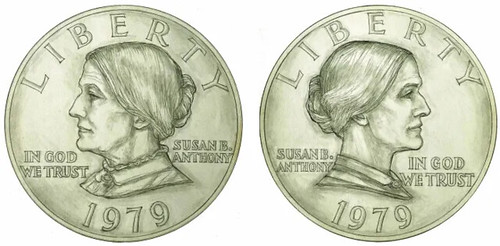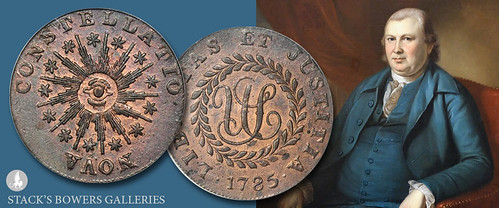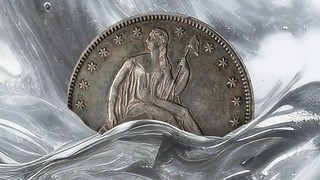
PREV ARTICLE
NEXT ARTICLE
FULL ISSUE
PREV FULL ISSUE
LOOSE CHANGE: DECEMBER 17, 2023Here are some additional items in the media this week that may be of interest. -Editor Bob Julian published a nice history of the Susan B. Anthony Dollar in Numismstic News. Here's a short excerpt - see the complete article online. -Editor
In one of those odd happenings that liven up numismatic history, a coin dealer managed to get a few hundred Anthony dollars in advance of the official release date, no doubt with the help of a friendly banker. The Treasury, apparently believing that this was a heinous crime of the worst kind, made a real effort to prosecute the hapless individual. Although the net result was the usual great waste of money and time, in truth, they should have given the coin dealer a medal for at least helping to popularize the new coin.
In due course, the coins, after a huge publicity campaign mounted at taxpayer expense, were duly released and were met with reactions ranging from a loud yawn to outright hostility. This was followed by laughter on a grand scale as the public realized the magnitude of the blunder. It was not long before the most commonly heard name for the new coin was the Shortly after this, and to prove some strange political point, Senator William Proxmire of Wisconsin forced through the Senate a ban on further coinage of the Anthony dollars until his demands were met. They soon were, and coinage resumed. Proxmire was once famous for handing out awards to bureaucrats for wasting money but was singularly quiet when it came to his part in this coinage disaster.
To read the complete article, see:
As Superintendent of Finance for the Confederation, Robert Morris is closely associated with the Nova Constellatio patterns of the 1780s. A short article by Stack's Bowers Numismatist Chris Bulfinch looks at Morris' stint in debtor's prison. -Editor Morris, caught up in speculative land schemes and saddled with other debts in the 1790s, declared bankruptcy in 1797 amid a significant economic downturn. He entered the Prune Street Debtors' Apartment, next to the Walnut Street Prison, in February 1798. He remained there until released in October 1801 under the terms of the Bankruptcy Act of 1800. George Washington and other Revolution-era notables visited Morris in debtors' prison, underscoring Morris' influence; some historians contend that some of the political will to pass the Bankruptcy Act of 1800 was a product of Morris' imprisonment. Morris' financial proposals and the Nova Constellatio patterns are not his only connections to U.S. numismatics. His portrait appears on $1,000 Legal Tender Notes in the 1860s and $10 Silver Certificates in the late 1870s, early 1880s.
To read the complete article, see:
Roger Burdette published a CoinWeek article answering reader questions about coin production at the U.S. Mint. Here's an excerpt - see the complete article online. -Editor Who or what determines the mintage size? Time, bullion on hand, a superintendent's orders for 3,844,000 coins one year and 1,766,000 the next?
There were several ways used to determine how many coins were needed. For copper coins made from 1793 through 1857, demand from large cities and regions filtered its way through the largest banks and the United States Treasurer to the U.S. Mint at Philadelphia. The Mint, in turn, ordered planchets from suppliers, mainly Boulton and then Crocker Bros. Early coppers, and the later base metal minor coins, were also very profitable for the Treasury. Gold and silver coins were made to the demand of depositors rather than for Government account. Production was erratic and depended on banks and deposits from specie brokers and the denominations of coin they requested...
To read the complete article, see:
Wayne Homren, Editor The Numismatic Bibliomania Society is a non-profit organization promoting numismatic literature. See our web site at coinbooks.org. To submit items for publication in The E-Sylum, write to the Editor at this address: whomren@gmail.com To subscribe go to: https://my.binhost.com/lists/listinfo/esylum All Rights Reserved. NBS Home Page Contact the NBS webmaster 
|


